Life as a nomad in the world’s least crowded country
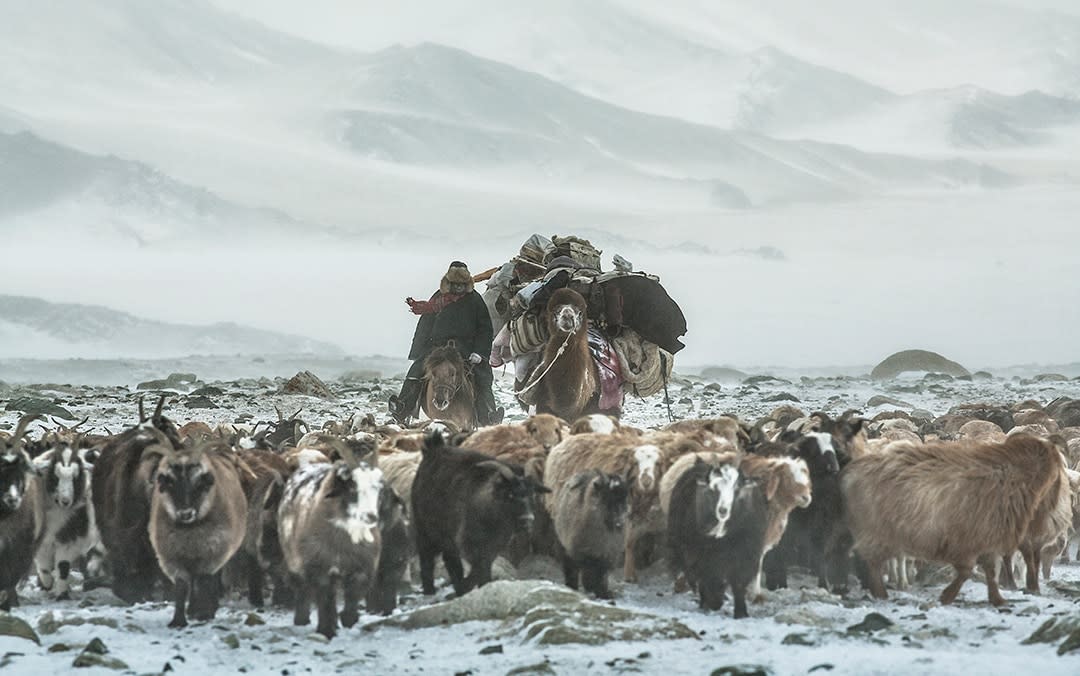
I’m lying in wait for a wolf – or, even better, a whole pack of wolves. The animals’ den lies hidden among the boulders in a dusty wadi below me. An hour ago, my guide Nergui led me to the entrance, pointing out droppings, paw prints and the recently butchered carcass of an ibex. Nobody was at home – Nergui’s well-aimed stone established that – so I’m staking out the hideaway from the cliffs above, hoping the owners might return. My companions will be back to collect me at sunset.
Meanwhile, I have the wilderness all to myself. I’m a tiny dot amid the arid wastes of Ikh Nart Nature Reserve, on the northern fringe of Mongolia’s Gobi Desert. In a country famously wide and empty, no space comes wider or emptier than this one. For the last 10 days, I’ve been largely on the move – as is fitting, in this land of nomads – but now, at last, I’ve come to a stop. It feels like a time for reflection; perhaps even a little Zen inspiration.
Somewhere over the horizon is my camp. We arrived yesterday after a long hike, tramping the gravel plains as our gear went ahead on a convoy of double-humped Bactrian camels. Despite the ominous litter of bleached bones underfoot, life was everywhere: Mongolian gazelles trotting away, big-horned argali sheep staring from escarpments and wheatears popping up on rock piles to rattle out their scratchy melody.
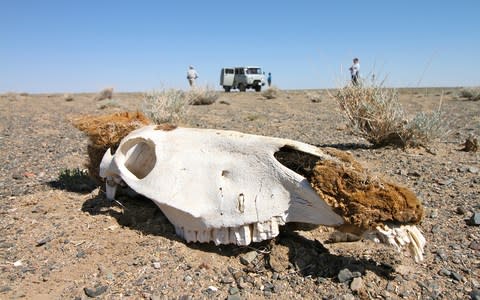
It’s too remote a place for humans, you’d think. Yet, on closer inspection, some of these rock piles were ancient grave sites. On one plain we found the ruins of a Buddhist temple complex, which – along with most of Mongolia’s other sacred sites – was destroyed during the 1930s by the then Stalinist government. A thousand monks had once lived here, Nergui told me. Now we spotted the shards of shattered ceramics and, worse, scattered bullet casings. But we also saw a garland of prayer flags draped around a nearby sandstone buttress.
Our camp comprised half a dozen white gers arrayed like hat boxes across the desert floor. These temporary circular dwellings, often known as yurts, are integral to the nomadic Mongolian way of life, traditionally built for dismantling and packing on to a yak cart in less than two hours. The interior of mine was faithful to tradition, with radial wooden spokes, a felt lining and a chimney vent. But the scatter cushions, wall hangings and wash basin were not what your average Mongolian herder might expect. Nor were the camp’s private loo and shower tents, or the restaurant yurt where we enjoyed our meals. The landscape may have been rough, but we certainly hadn’t been roughing it.

My introduction to Mongolia’s jaw-dropping landscapes had come 10 days earlier in the Altai Mountains of the country’s far west. After a flight from the capital, Ulaanbaatar, we transferred by road to the dusty settlement of Delun. I say “road”: in fact, our route was often little more than tyre tracks. With no settlements or signposts, we navigated by the horizon (a ridge here, a saddle there) and took cues from any gers we came across. “It’s Mongolian GPS,” said my guide Batana. “Ger Positioning System!” Meanwhile our driver Erdene kept up a keening tenor lament. “It’s about his mum,” Batana added, seeing my curiosity. “He says she makes the best cup of tea in the morning.”
In the hills outside Delun we had a date with Yerbol, one of the region’s traditional Kazakh eagle-hunters. We arrived to find our man attired in purple robes and fox-fur hat, and bearing aloft Achtanik, his four-year-old female golden eagle. This formidable bird perched on its keeper’s thickly gloved wrist, occasionally beating its massive wings for balance. Today, fewer than 200 such hunters remain and Yerbol is something of a local legend. Mounted on his horse, before a backdrop of the snow-capped Altai, he certainly cut an impressive dash. Donning the glove myself, and feeling the grip in those massive talons, I was unable to muster the same confidence.
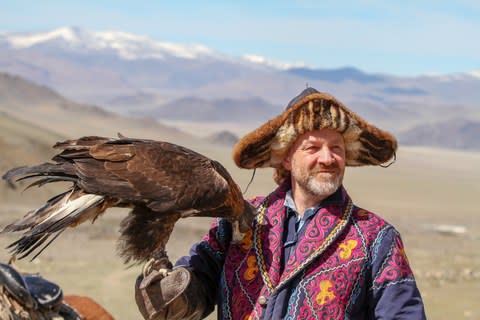
The Altai is snow leopard country – and back in Delun we had learned about a local project to monitor these rare animals and mitigate conflict with local herders. The following day we bumped down nearby Chigertei valley towards the towering peaks on the Chinese border. Bugling demoiselle cranes took flight at our approach and a mounted herdsman and son drove their sheep down the valley in an irresistible chocolate-box tableau. In a pocket of forest, our national parks guide Yelik stopped to check a camera trap mounted on a larch trunk.
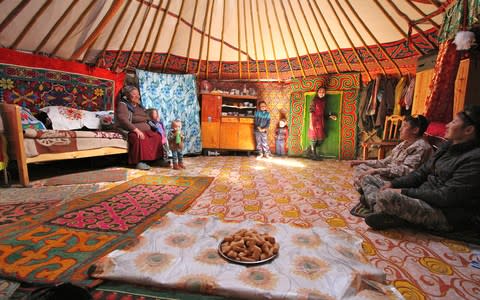
At a nearby cluster of gers, we popped in to pay our respects and sample a salty cup of yak’s butter tea. This homestead was erected just three days ago, when the family arrived for the summer grazing. Batana pointed out the particulars of the ger’s interior: how the male side is to the west and the female to the east, with possessions arranged accordingly. We seated ourselves on rugs and exchanged pleasantries, while assorted children peeped through the door in wide-eyed astonishment. I asked the grandmother – via Batana’s translation – whether she had ever seen a snow leopard. She told us how local herders had once killed one of the cats and hung its pelt outside their ger; and how the next night two more had descended from the mountains and killed 500 sheep. An apocryphal tale, perhaps, but its implicit moral seemed to offer some encouragement for this persecuted predator.

Needless to say, no snow leopard appeared for our viewing pleasure. But that night, back at camp, Yelik fired up his laptop to take us through some images previously downloaded from the very camera trap we had visited. Among them was a stunning sequence of a female snow leopard and two cubs sniffing at the lens. I felt the hairs rise on the back of my neck.

As our journey continued, surprises came thick and fast. A day’s drive to the east, we found ourselves floating in the limpid waters of Lake Dorgon. This broad inland sea arrived as a shocking blue among the dusty desert flats and is ringed by an equally unexpected mini-Sahara of apricot-coloured sand dunes. There was a sense of unreality about our picnic, as camels – legs grotesquely elongated in the heat-haze – wandered the shore and terns wheeled over the lapping waves. The Altai Mountains still lined the horizon but their distant snow-capped peaks now seemed like some CGI fakery.

Each new day also reinforced the theme of movement that was coming to define my idea of Mongolia. Much of the wildlife we encountered was migratory, from rare saiga antelope that galloped away in plumes of dust to dapper bar-headed geese that had overflown the Himalayas to get here and breed. With no fence in sight, the livestock – camels, yaks, goats, horses – all wandered at will. And every landscape had its human travellers: distant figures on horseback or motorbike beetling across the vastness, and neat white gers materialising like spacecraft in the middle of nowhere. We stopped to greet one Clint Eastwood-style lone rider, who narrowed his eyes at the skies and promised that the kang (drought) was coming to an end.

It all served to remind us what we’d learned at the national museum in Ulaanbaatar on day one: that Mongolia was where humanity first perfected the art of wandering. It was here, after all, that the first pastoralists learned to herd livestock with the seasons, and ultimately where – under Genghis Khan – a culture built on horsemanship forged the greatest empire ever known, stretching from the Hungarian pusztas to the Sea of Japan. Sadly, my itinerary wasn’t built around horsemanship or the changing seasons. It was by air that I returned to Ulaanbaatar and thence, by 4x4, to the Gobi Desert, where Ikh Nart – our final destination – awaited.

En route, we spent two days at Hustai National Park. This reserve is home to a special horse, but one that not even a Mongolian would saddle. Known locally as thaki, the Przewalski’s horse once teetered on the brink of extinction. Today, small family parties roam the park’s hillsides, taking their chances with the local wolves. At park HQ, our biologist guide Tsegii Tserendulam explained how thakis were reintroduced in 1992 from a captive breeding population in Poland and are now thriving. Later, we watched a small party drink at a roadside stream then gallop away over a ridge. Stockier than their domestic cousins, they appeared both familiar and somehow prehistoric.
The next day brought cinereous vultures, Himalayan marmots, red deer and other natural history highlights. And, again, the landscape proved to be equally rich in human history. Tsegii took us to a Bronze Age tomb, where radiating lines carved into the stone mimicked the internal structure of a ger, revealing that – internal combustion engine and smart phone notwithstanding – some things in Mongolia have changed little in the last 1,200 years.
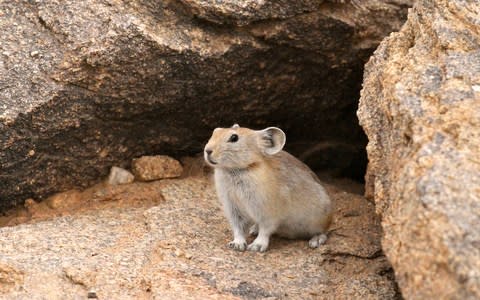
It was such reflections that occupied my mind, three days later, on that final afternoon above the wolf den. As the shadows deepened, the rock stacks around me seemed to take on shapes: horse heads, owls, Genghis Khan on a camel. Finally – perhaps just as nirvana beckoned – the distant note of an approaching vehicle broke the spell. I packed camera and water bottle, put on a fleece and traipsed back to our meeting place.
Sadly, no wolf. That would have been too neat an end to my adventure. But as we rumbled back to camp in the twilight, a small, thick-tailed animal dashed across our track. “Manul!” shouted Nergui, braking hard. This is the local name for the Pallas’s cat – a furry feline, not unlike a diminutive snow leopard but even more elusive. It was a high-five moment: even Nergui, who regularly saw wolves, hadn’t laid eyes on one this year.
Back in camp, our manul encounter brought an air of celebration and the story rolled back and forth over barbecued goat. Later, as my companions turned in, I sat out with a last cold beer. Soon all I could hear was the sighing wind and a methodical munching from a line of recumbent camels, silhouetted under the stars. It felt like a profound moment. Had Genghis Khan ever felt something similar? Who knows where inspiration for empires begins.
How to do it
Steppes Travel (01285 601 050; steppestravel.com) is offering a pioneering 13-day group tour to Mongolia for £5,995pp based on two people sharing. The price includes accommodation and some meals, plus all transfers.
International flights with Turkish Airlines (turkishairlines.com) cost from £1,100 return.

